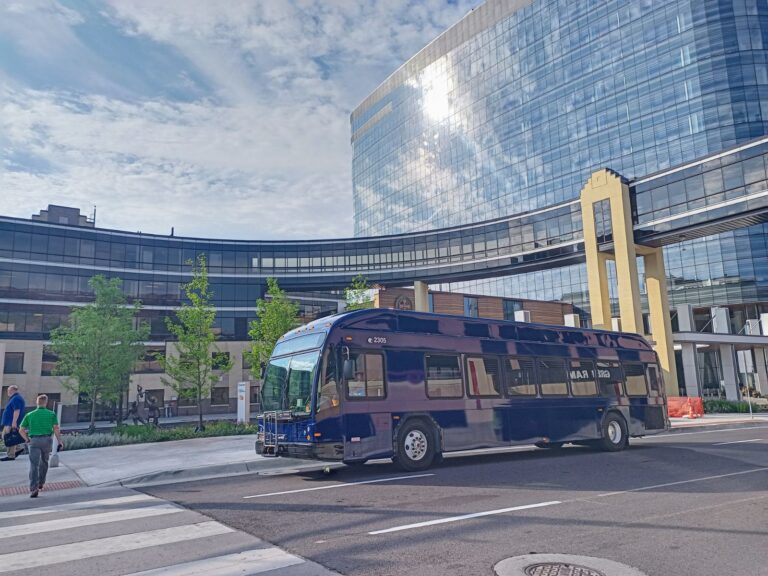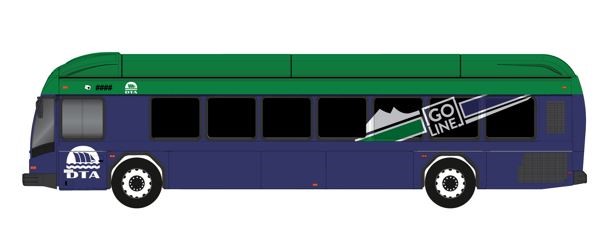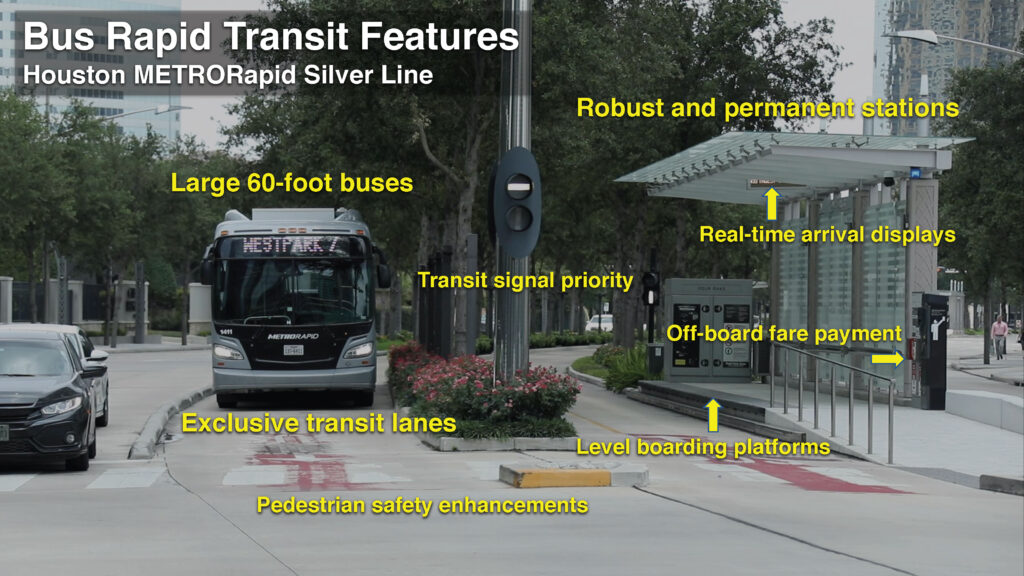
Bus riders are experiencing big changes from the Duluth Transit Authority (DTA) this fall. A new route map is in place, some bus stops are removed, and new “Go-Line” buses can be seen throughout town. The changes are part of a project to improve service, increase efficiency, and keep fares stable. These changes are aligned with the goals of the Duluth Citizens’ Climate Action Plan, which aims to make Duluth carbon-neutral by 2050. Let’s see how these two plans—the DTA updates and the Duluth Citizens’ Climate Action Plan—connect.
The overall goal of the DTA updates is to improve bus service in Duluth. For years, community members have been requesting more evening service, more consistent service on the weekends, and faster service to popular areas. The new bus system meets these requests. The DTA has also introduced two mobile apps to help people navigate routes and pay fares easily. These changes support the transportation goals of the Duluth Citizens’ Climate Action Plan by expanding bus services. Any updates that make riding the bus easier are in direct support of Duluth’s climate goals. When people choose to ride the bus instead of driving, our air is cleaner, our streets are less crowded, and our greenhouse gas emissions decrease.
Another major goal of the DTA update is increasing efficiency. Bus systems that are efficient and on time are easier to use. The updated route map is designed to provide more frequent service to the most popular areas of town, as community members requested. The new map also increases ridership, meaning fewer empty buses. Increased efficiency also means lower emissions per rider, and less overall pollution in our community, which is more good news for our climate.
In order to improve efficiency, the DTA closed some routes and consolidated others. If the DTA had not made those changes, it could have lost significant ridership-based funding, or had to increase fares. Keeping costs low is a major priority of the bus update project. Duluth bus prices remain equal or slightly lower than prices in similar-sized cities in the Midwest. For example, in Bloomington and Plymouth, Minnesota, it costs $1.00-3.25 to ride the bus. Wisconsin riders in Kenosha and Racine pay $1.00-2.00 per ride. In Duluth, a bus ride still costs $0.75-1.50, depending on the time of day. Affordability is absolutely key to building a carbon-neutral Duluth. To have a functioning transit system, everyone needs to be able to travel comfortably, safely, and affordably.
There are tradeoffs for these improvements. As mentioned earlier, the DTA has closed or consolidated routes that had the lowest ridership. The routes that are closed represent 1% or less of overall bus ridership, but the impact is still being felt. Many people mention that they now have to travel further to get to their bus stops, or that their favorite routes are no longer in service. The DTA has expressed regret for inconveniences. The DTA determined that closing less-used stops and routes is an appropriate tradeoff for the overall improvements in service and efficiency.
Overall, focusing on improving service and efficiency is part of a long-term vision to improve the buses in Duluth. A key part of this vision is the new Go-Line buses. They are designed to be the most frequently-used routes, going to the most popular locations on the bus map. Go-Line buses run every fifteen minutes. Their service extends later in the day than other routes. These buses also stop less frequently than other routes, so that service can be faster.

The Go-Line buses are not just more efficient for the current system. They are also a step towards a new model called Bus Rapid Transit (BRT), and a step towards a carbon-neutral future. BRT models can be a powerful way to improve transit and reduce emissions. The priority of BRT systems is efficiency. There are many different ways to accomplish this. Riders might pay fare at the bus stop, to streamline boarding and make stops quicker. Some BRT systems include bus stops that are specially designed so riders can step directly onto the bus, instead of waiting for the bus to lower. Dedicated bus lanes are also often used to improve the overall flow of traffic. These changes make buses easier to use, so more people will choose riding the bus over driving a car. And for people who don’t have cars, BRT makes getting around the city easier than ever.
Here is an example from Atlanta, Georgia:

In addition to working efficiently and lowering emissions, BRT systems can transform neighborhoods. In the example photo above, the BRT infrastructure also includes safe pedestrian crossings, trees and green spaces, and a permanent bus shelter that protects riders from sun and rain. This is an example of how working for a carbon-neutral future can also help us build vital, safe, welcoming neighborhoods. Read more about BRT from the Federal Transit Authority.
Learn more about the bus updates at FAQs – Duluth Transit Authority. And if you’d like to share comments, questions, or concerns, you can email planning@duluthtransit.com or call 218-623-4315.